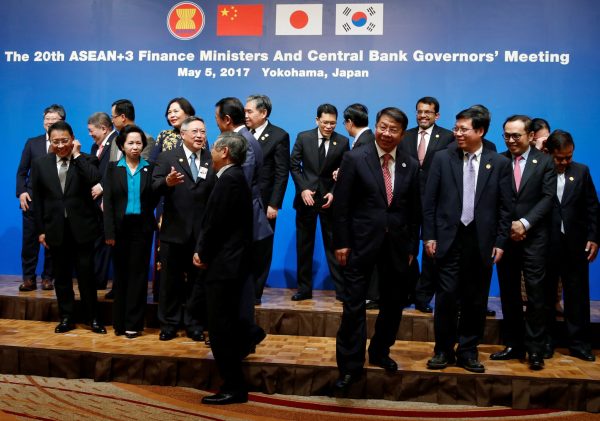The result was the ASEAN+3 financial cooperation process set up in 2000, which established regional financial governance architectures including the Chiang Mai Initiative Multilateralisation (CMIM). Its purpose was to provide short-term liquidity assistance through a network of currency swaps in case of balance-of-payments difficulties.
The CMIM has since evolved. In 2014, the size of the fund was raised to US$240 billion and its IMF de-linked portion (which allows the members to borrow up to a certain percentage of their maximum drawing amount without being put under an IMF program) increased to 30 per cent. The ASEAN+3 Macroeconomic Research Office (AMRO) — CMIM’s surveillance arm — was transformed into an international organisation in the same year.
But CMIM’s continued development seems to have been arrested since then. Neither the size of the fund nor the de-linked portion has been expanded since 2014, and with its current size of US$240 billion, CMIM can at best assist a few small-to-medium economies in crisis times. If a member wants to draw on more than 30 per cent of its maximum borrowing amount, they still need to sign onto the IMF’s structural assistance programs. This could jeopardise CMIM’s objective of disbursing financial support in a timely fashion since obtaining the IMF’s agreement may take time.
Critics further worry that AMRO and its activities may not be able to completely break free from international politics. This is mainly because AMRO’s activities are overseen by the Executive Level Decision-Making Body, which comprises ASEAN+3 deputy finance ministers and deputy central bank governors.
The little progress in recent years is the result of a lack of leadership in the ASEAN+3 financial cooperation process. Leadership is needed to realise international collaboration. Certain states must take the lead not only in championing ideas but also in persuading or pressuring others to get on board. The key question is this: can any ASEAN+3 parties actually provide leadership?
CMIM decisions on executive issues (such as financial support disbursement) are governed by a two-thirds supermajority voting system. As far as voting powers are concerned, Japan, China (including Hong Kong) and the ten ASEAN nations combined hold equal votes of 28.41, and South Korea has 14.77 votes. Under these voting arrangements, there are three possible scenarios of leadership.
The first scenario suggests China–Japan co-leadership. This is more diplomatically acceptable than leadership provided by either Beijing or Tokyo due to the power rivalry between them. Also, both countries have an incentive to co-lead as they are potential lenders and are the biggest CMIM contributors.
Nevertheless, such a scenario is unlikely. Beijing and Tokyo are still playing their own separate games. Instead of working together to beef up CMIM, both have established their own separate bilateral currency swap networks within the region via the People’s Bank of China and the Bank of Japan respectively. The extent to which Beijing and Tokyo could move beyond their rivalry to jointly lead ASEAN+3 processes remains to be seen.
Another option is South Korean leadership. If China, Japan and ASEAN are not united, then South Korea possesses the power to cast the determining vote: if only two of China, Japan or ASEAN vote for a given proposition, then their combined votes constitute only 56.82 votes, which is under the two-thirds supermajority threshold.
Compared to proposals by China and Japan, proposals tabled by Seoul are likely to be more well-received by ASEAN participants. Unlike the former two states, South Korea is perceived as a neutral actor with no geopolitical aspirations. South Korea has also never attempted to build up bilateral currency arrangement networks that could undermine CMIM’s development. But the chances of Beijing and Tokyo accepting Seoul’s leadership are not at all clear.
A final possibility is that Southeast Asian nations provide leadership. Despite having less voting power individually when compared to their Northeast Asian peers, these states have shown that they can bargain as a bloc to increase their clout at several international forums such as the World Trade Organization and Asia-Pacific Economic Cooperation.
But this leadership scenario too faces certain obstacles. ASEAN parties are potential CMIM borrowers. This position might erode their influence over the future development of CMIM vis-a-vis their Northeast Asian neighbours (who are the likely lenders to this scheme).
In order to advance the regional financial safety net, CMIM needs a leader, but paths for ASEAN+3 stakeholders to play the part are filled with challenges. With such a leadership void, CMIM’s future advancement can at best be modest.
Kaewkamol Pitakdumrongkit is Deputy Head & Assistant Professor at the Centre for Multilateralism Studies at the S Rajaratnam School of International Studies (RSIS), Nanyang Technological University, Singapore.
A version of this article originally appeared here on RSIS.

